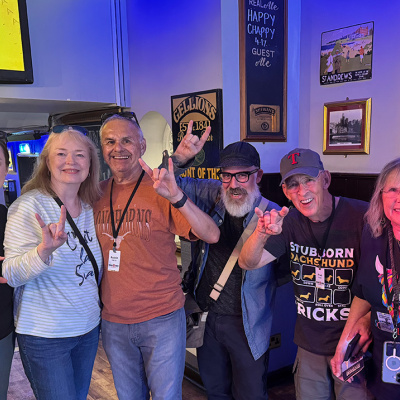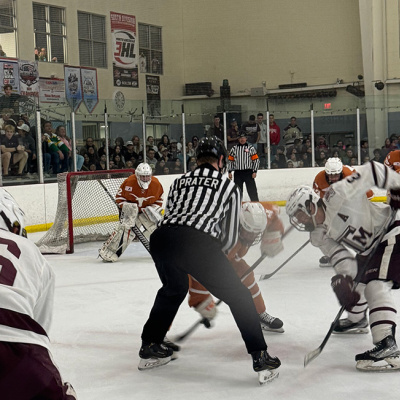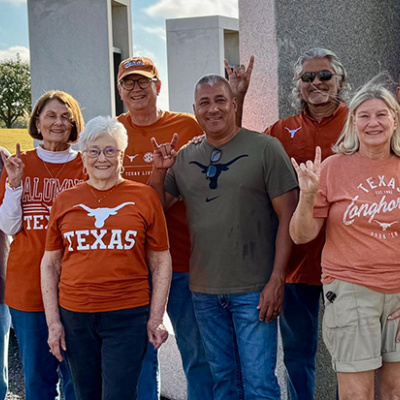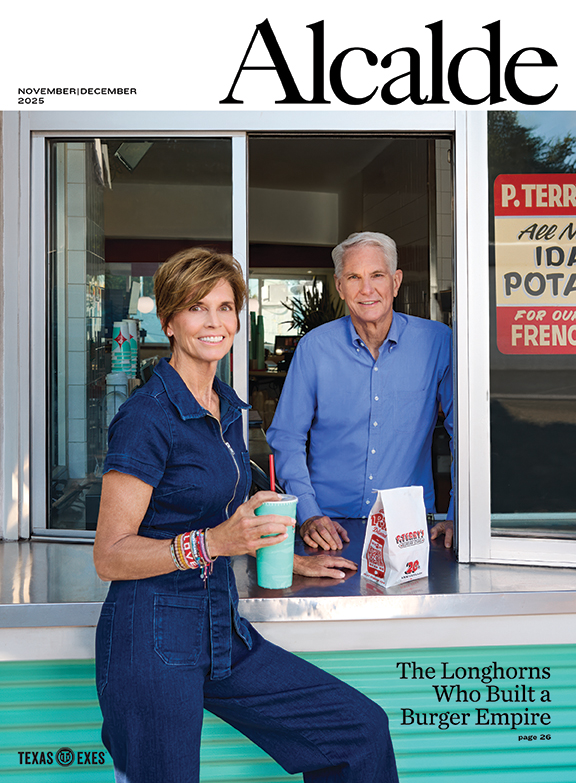In Wonderland: An Exhibition at the Harry Ransom Center Brings Beloved Children’s Literature to Life

In 1890, America’s first child star, Elsie Leslie, earned the titular dual roles in the stage adaptation of Mark Twain’s The Prince and the Pauper. Her mentor, Edwin Booth, gifted her a hat passed down through generations of acclaimed actors as a costume staple. Committed to representing the disadvantaged status of pauper Tom Canty, the 9-year-old actor distressed her hat for the role.
This emblem of a young artist’s devotion to the arts and literature is just one installation in a collection of stories similar to Leslie’s now on display at the Harry Ransom Center. Words and Wonder: Rediscovering Children’s Literature draws from the breadth of the Harry Ransom Center’s archives to depict the history of storytelling, literacy, and adaptations stretching across generations of children’s literature. Named as one of The Guardian’s most exciting U.S. art exhibitions of the year, the exhibition opened on Feb. 25, 2025, and will run until Aug. 17, 2025.
On one side of the Center’s first-floor gallery space, the exhibition is organized in a digestible and deliberate manner. It is split into two parts: The first part features children—prominent authors residing among them—as learners, writers, and performers engaging with various forms of literature. The second displays the ways adults as artists, illustrators, and creatives have interpreted literature for children.
“Most of our collections are documenting the process of a final product,” says Erica Nunn-Kinias, associate director of exhibitions. The moment the private tour begins, she makes her way to the Alice in Wonderland installation, located in the second part of the exhibit. She says she feels this installment best encapsulates the center’s commitment to displaying the processes, materials, and people behind the art the public sees.

The Alice in Wonderland installment presents the various steps it took to adapt Lewis Caroll’s text into animated and live-action films, from rare storyboards and 20th-century press materials, to a charming Cary Grant posing with his character the Mock Turtle in the book’s live-action adaptation. At the center of the second part of the exhibition lies the source of these adaptations: Alice’s Adventures in Wonderland. To the right of it, Nunn-Kinias points out, sits a letter from the illustrator of Caroll’s book, John Tenniel. He writes to a Mr. MacKenzie, voicing his contempt for the incessant chatter about the book: “I shrink at the mere mention of Alice in Wonderland.”
“You can have this first edition of Lewis Carroll’s Alice in Wonderland, and it’s complete and whole, but that doesn’t really tell you about the process of making it,” Nunn-Kinias says. “So [this letter] gives you an insight into not just a finished thing and ‘Isn’t it wonderful and precious?’ but the real people and the grittiness of the process in the moment.”
Situated underneath the museum card of the letter is a QR code that guides visitors to a reading of the letter by Nunn-Kinias. Various QR codes are scattered among the archival materials that lead to readings and transcripts of different pieces in the exhibit and offer further tidbits of information on others, like the brilliantly peculiar Arthur Rackhman’s illustrations for Edgar Allen Poe. “That’s what the [interactive elements] were designed to do—so you can enjoy a different lens,” she says. “This is me reading the letter because not all of us can read 19th-century cursive.”
Over a short period of nine months (as opposed to the typical 13-14 months), the team of in-house curators; Megan Barnard, the associate director of administration and curatorial affairs; and Nunn-Kinias went about meticulously creating this exhibition—from deliberating over the positioning of the Winnie the Pooh vinyl decal to determining what material, from the archive of 400 million manuscripts and thousands of art pieces, would make it in the final version of the exhibition.

“[The curators] have such a deep knowledge of their subject area, but also of what we have in the collection,” she says. “They were able to—because they’ve been working with all of these things—pick from the collection what they think would work best.”
The exhibition plays around with various media, largely due to this breadth of versatile curators. Located in the first part of the exhibit is the Magic Lantern, a 19th-century image projector which showcases transparent slides. The exhibit displays slides from the late 19th-century illustrations of Alice in Wonderland. To maintain the physical integrity of the materials, the Magic Lantern and slides remain enclosed in a glass box. However, a curtain next to the box leads to a screening room. There, the slides are digitized and presented with the script that would have accompanied each slide, giving visitors a glimpse into what children’s games and visual entertainment once looked like.
“[These media] give us more opportunities to relate to other people’s interests,” Nunn-Kinias says. “We have had past exhibitions with just early books and manuscripts ... but when you do a thematic topic such as children’s experience with literature, there are rules, but there really are no kind of boundaries.”
Nunn-Kinias peruses the juvenilia on display, or the work produced by an author or artist when they were still young, including scribbles of childhood love poems by Gabriel García Marquez and a book review from a 12-year-old
J. M. Coetzee. “Remember yourself as a child when you’re just figuring out things that are exciting or interesting to you, the books that you like to read or the things you like to draw,” she says. “That sense of wonder, both how you imagine text that is already written, and the freedom that it could look like anything … I think all of this material is really personal in that way.”
CREDIT: Harry Ransom Center (3)





